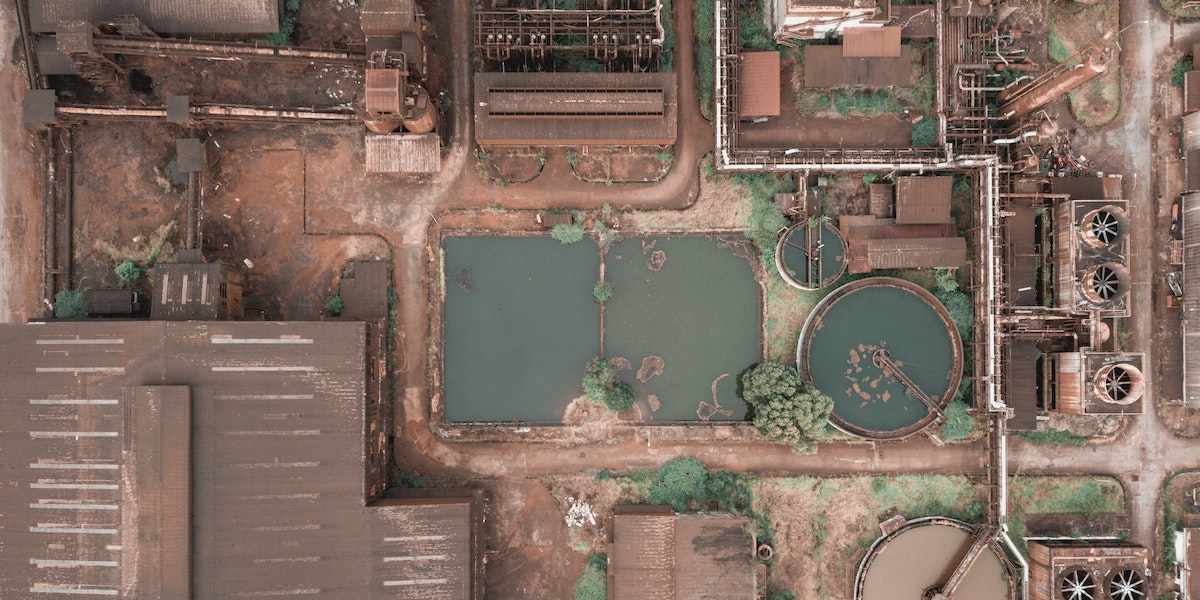 Authors: Professor Sarah Hitt SFHEA (NMITE); Professor Chike Oduoza (University of Wolverhampton); Emma Crichton (Engineering Without Borders UK); Professor Mike Sutcliffe (TEDI-London); Dr Sarah Junaid (Aston University); Isobel Grimley (Engineering Professors’ Council).
Authors: Professor Sarah Hitt SFHEA (NMITE); Professor Chike Oduoza (University of Wolverhampton); Emma Crichton (Engineering Without Borders UK); Professor Mike Sutcliffe (TEDI-London); Dr Sarah Junaid (Aston University); Isobel Grimley (Engineering Professors’ Council).
Topic: Monitoring and resolving industrial pollution.
Engineering disciplines: Chemical engineering; Civil engineering; Manufacturing; Mechanical engineering.
Ethical issues: Environment, Health, Public good.
Professional situations: Bribery, Whistleblowing, Corporate social responsibility, Cultural competency.
Educational level: Advanced.
Educational aim: To encourage ethical motivation. Ethical motivation occurs when a person is moved by a moral judgement, or when a moral judgement is a spur to a course of action.
Learning and teaching notes:
This case requires an engineer to balance multiple competing factors including: economic pressure, environmental sustainability, and human health. It introduces the perspective of corporate social responsibility (CSR) as a lens through which to view the dilemma. In this case study, the engineer must also make decisions that will affect their professional success in a new job and country.
This case study addresses two of AHEP 4’s themes: The Engineer and Society (acknowledging that engineering activity can have a significant societal impact) and Engineering Practice (the practical application of engineering concepts, tools and professional skills). To map this case study to AHEP outcomes specific to a programme under these themes, access AHEP 4 here and navigate to pages 30-31 and 35-37.
The dilemma in this case is presented in two parts. If desired, a teacher can use Part one in isolation, but Part two develops and complicates the concepts presented in Part one to provide for additional learning. The case allows teachers the option to stop at multiple points for questions and/or activities as desired.
Learners have the opportunity to:
- practise preparing for a business presentation;
- engage in problem definition in order to elicit ethical components of an issue;
- investigate technical components of pipeline design and groundwater pollution;
- evaluate CSR motivations and practices;
- consider risks and obligations related to whistleblowing.
Teachers have the opportunity to:
- highlight professional situations related to working in new countries or companies;
- evaluate students’ ability to present and defend technical decisions;
- address business approaches to CSR;
- integrate technical content on pipelines and flow.
Learning and teaching resources:
- Engineering Council of India: Code of Ethics
- Sustainability and CSR
- Engineering Council: Guidance on Whistleblowing
Summary:
Yasin is a pipeline design engineer who has been employed to manage the wastewater pipeline for MMC Textile Company in Gujarat. The company has a rapidly growing business contributing to one of India’s most important industries for employment and export. Yasin was hired through a remote process during the pandemic – he had never been to the industrial site or met his new colleagues in person until he relocated to the country. For 10 years, Yasin worked for the Water Services Regulation Authority in the UK as a wastewater engineer; this is the first time he has been employed by a private company and worked within the textile industry.
The production of textiles results in highly toxic effluent that must be treated and disposed of. A sludge pipeline takes wastewater away from MMC’s factory site and delivers it to a treatment plant downstream. On arrival at MMC, Yasin undertakes an initial inspection of the industrial site and the pipeline. He conducts some testing and measurements, then reviews the company’s documents and specifications related to the pipeline. This pipeline was built 30 years ago when MMC first began operations. In the last five years, MMC has partnered with a fast fashion chain and invested in advanced production technologies, resulting in a 50% increase in its yearly output. Yasin soon realises that as production has increased, the pipeline sometimes carries nearly double its registered capacity. Yasin was hired because MMC’s managers were aware that the pipeline capacity might be stretched and needed his expertise to develop a solution. However, Yasin suspects they are unaware of the real extent of the problem, and is nervous about how they will react to confirmation of this suspicion. Yasin is due to provide an informal verbal report on his initial inspection to the factory managers. This will be his first official business meeting since arriving in India.
Optional STOP for questions and activities:
1. Discussion: Although Yasin is a qualified and experienced engineer, what professional challenges might he encounter at MMC?
2. Discussion: What preparation does Yasin need to make for this informal meeting? What data or evidence should he present?
3. Activity: Role-play Yasin’s first meeting with the factory managers.
4. Activity: Research the environmental effects of textile production and / or India’s policies on textile waste management.
Dilemma – Part one:
At the meeting, Yasin is tasked with developing a menu of proposals to mitigate the problem. The options he puts forward include retrofitting the original pipeline, replacing it with a new one, eliminating the pipeline entirely and focusing on on-site water treatment technology, as well as other solutions. He is directed to consider the risks and benefits of the alternatives. These include the economic burdens, both the cost of the intervention as well as the decline in production necessitated while the intervention takes place, and the environmental consequences of action or inaction.
During his research, Yasin discovers that informal housing has sprung up in the grey zone between the area’s formal zoned conurbation and the MMC industrial site. This is because there is little local regulation or enforcement as to where people are allowed to erect temporary or permanent dwellings. He estimates that there are several thousand people living in impoverished conditions on the edges of MMC’s property. Indeed, many of the people living in the informal settlement work in the lowest-skilled jobs at the textile factory. The informal settlement is located around a well that Yasin suspects may be polluted by effluent that seeps into the soil and groundwater when the pipeline overflows. He can find no information in company records about data related to this potential pollution.
Optional STOP for questions and activities:
1. Discussion: Does Yasin have a responsibility to do anything about the potential groundwater pollution at the informal settlement?
2. Discussion: Should Yasin advocate for the solution with the lowest cost?
3. Activity: Practise problem definition. What are the parameters and criteria Yasin should use in defining the issues at stake? What elements of the problem is he technically or ethically obligated to resolve? Why?
4. Activity: Create a tether diagram mapping the effects of each potential solution on the company, the local people, and the environment.
5. Activity: Undertake a technical activity in the areas of chemical, civil, manufacturing and / or mechanical engineering related to groundwater pollution.
Dilemma – Part two:
As Yasin learns more about MMC, he discovers that as the company grew rapidly in the last five years, and has boosted its CSR initiatives, MMC started a programme to hire and upskill local labourers and began a charitable foundation to make donations to local schools and charities. For these activities, MMC has recently received a government commendation for its community commitments. Yasin is concerned about how to make sense of these activities on the one hand, and the potential groundwater contamination on the other. He speaks to his supervisor about MMC’s CSR initiatives and learns that company directors believe that their commendation will pave the way for an even better relationship with the government and perhaps enable a favourable decision on a permit to build another textile factory site nearby. At the end of the conversation, his supervisor indicates that if a new factory is built, it will need a chief site engineer. “That position would be double your current salary,” the supervisor says, “a good job on fixing this pipeline situation would make you look like a very attractive candidate.” Yasin is due to formally present his proposal about the pipeline next week to the factory manager and company directors.
Optional STOP for questions and activities:
1. Discussion: How should Yasin respond to the suggestion of a job offer?
2. Discussion: Should Yasin report any of MMC’s actions or motivations to an external authority?
3. Activity: Research CSR and its ethical dimensions, both in the UK and in India.
4. Activity: Undertake a technical activity in the areas of chemical, civil, manufacturing and / or mechanical engineering, related to pipeline design and flow rates.
5. Activity: Debate whether or not Yasin should become a whistleblower, either about the groundwater pollution or the job offer.
Enhancements:
An enhancement for this case study can be found here.
This work is licensed under a Creative Commons Attribution-ShareAlike 4.0 International License.
Any views, thoughts, and opinions expressed herein are solely that of the author(s) and do not necessarily reflect the views, opinions, policies, or position of the Engineering Professors’ Council or the Toolkit sponsors and supporters.




